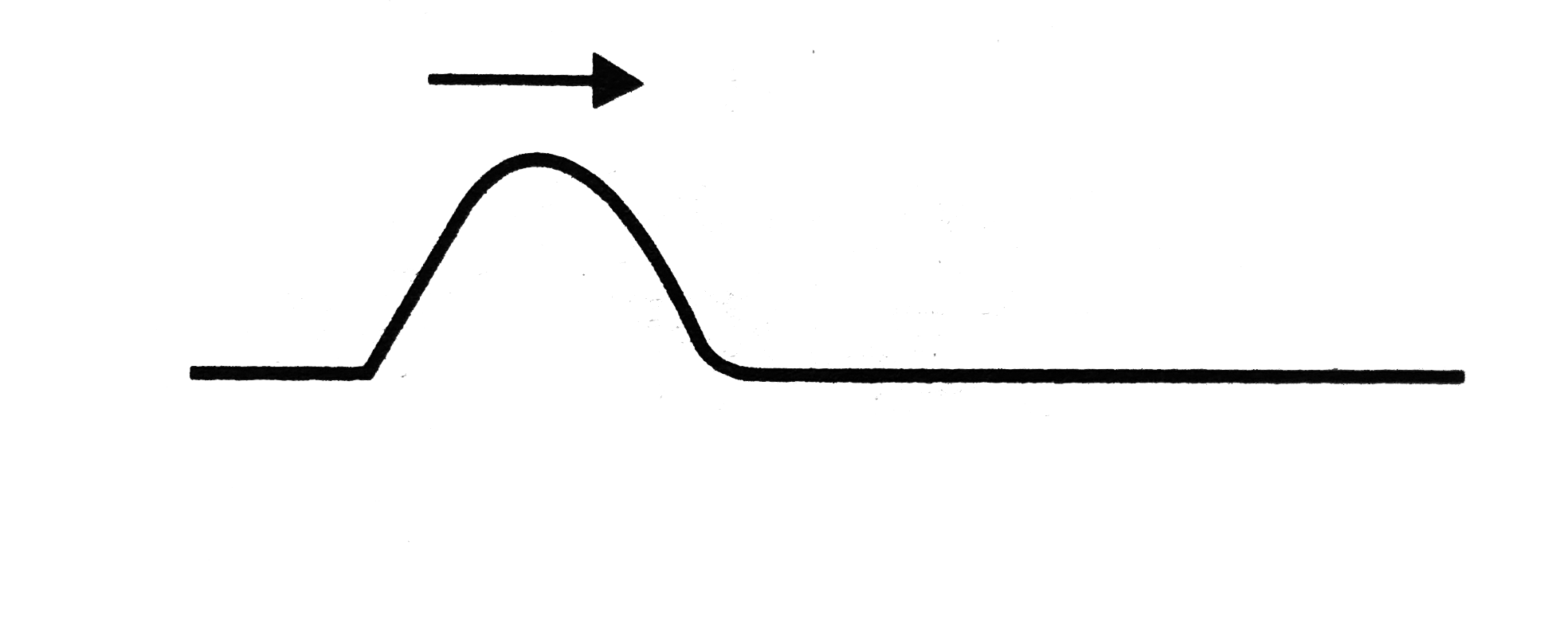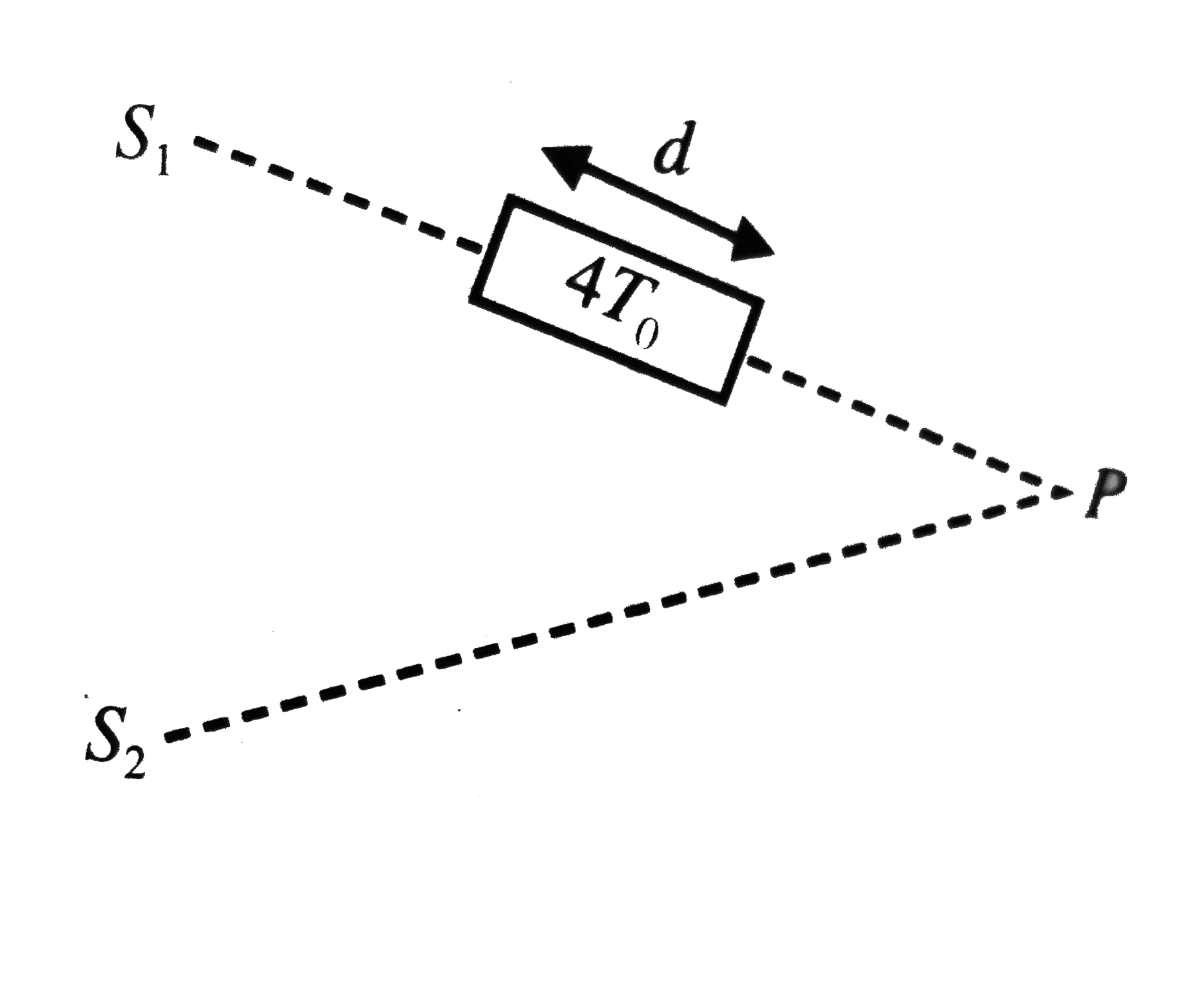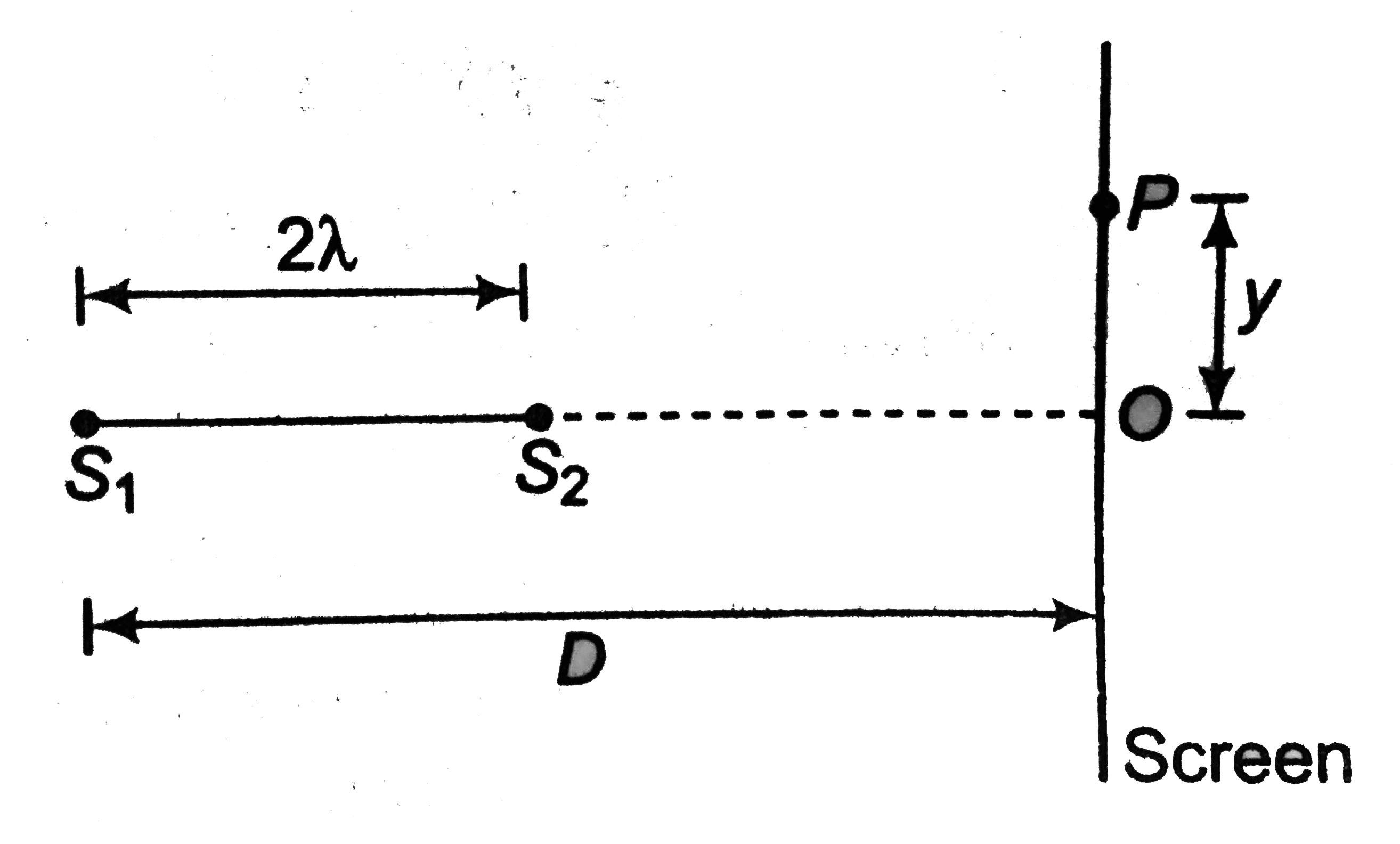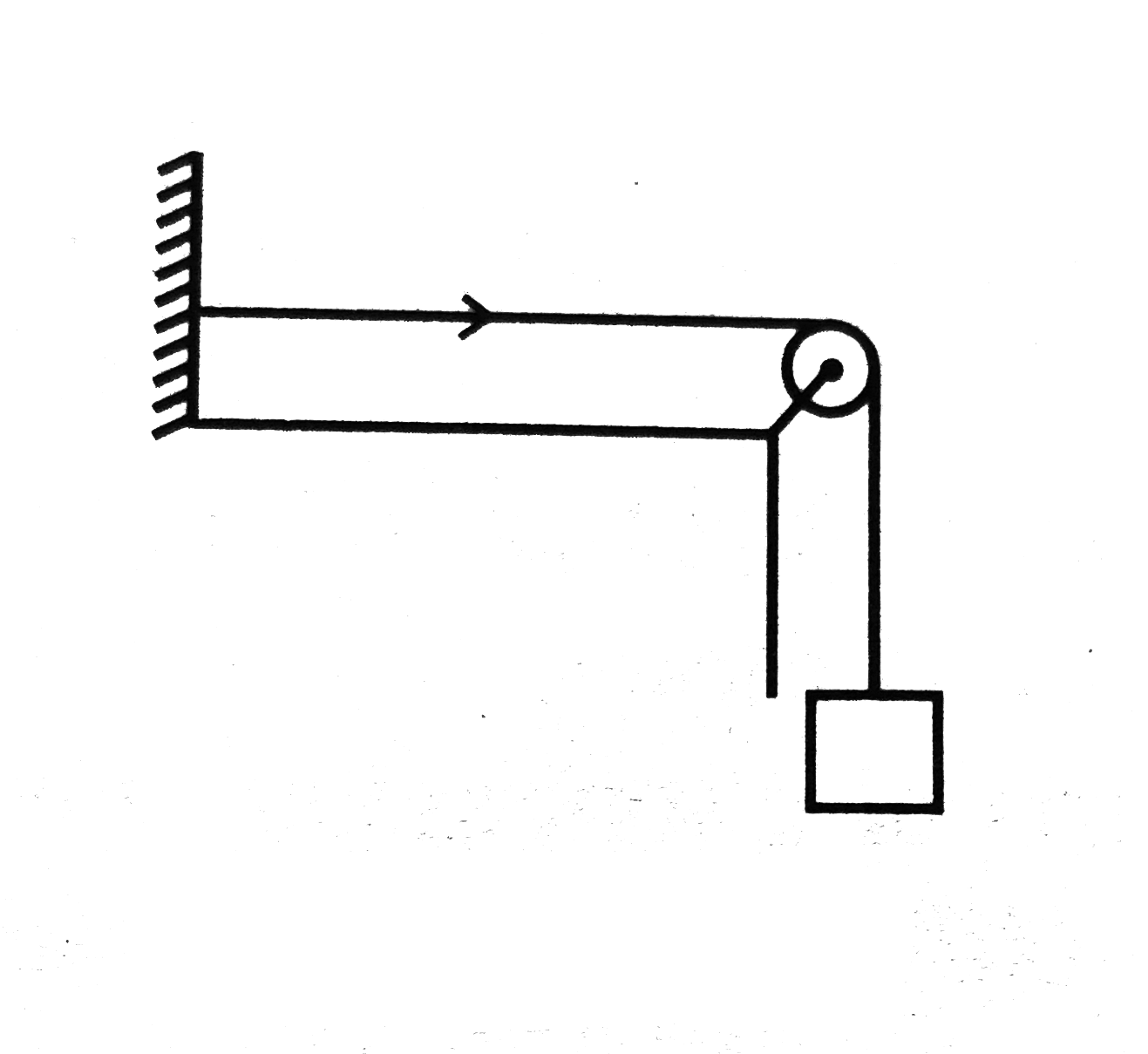Complete Solutions to Subjective of chapter SUPERPOSITION AND STANDING WAVES of Class 11 book with complete answers and questions
| Class 11 | PHYSICS |
| Chapter | SUPERPOSITION AND STANDING WAVES |
| CENGAGE PHYSICS | Subjective |
| Number Of Questions | 24 |
| Academic Year | 2023-24 |
Two wires of different linear mass densities are soldered together end to end and then stretched under a tension `F`. The wave speed in the first wire is thrice that in the second. If a harmonic wave travelling in the first wire is incident on the junction of the wires and if the amplitude of the incident wave is `A = sqrt(13) cm`, find the amplitude of reflected wave.
03:09View SolutionThe pulse shown in Fig.7.73 has a speed of `5 cm//s`. If the linear mass of the right string is `0.5` that of the left string , find the ratio of height of the transmitted pulse to that of incident pulse.
 02:21View Solution
02:21View SolutionA 40 cm wire having a mass of 3.2 g is stretched between two fixed supports 40.05 cm apart. In its fundamental mode, the wire vibrates at 220 Hz. If the area of cross section of the wire is `1.0 mm^2`, find its Young modulus.
07:16View SolutionA `3 m` long organ pipe open at both ends is driven to third harmonic standing wave. If the amplitude of pressure oscillations is `1` per cent of mean atmospheric pressure `(p_(o) = 10^(5) Nm^(2))`. Find the amplitude of particle displacement and density oscillations. Speed of sound `upsilon = 332 m//s` and density of air `rho = 1.03 kg//m^(3)`.
05:29View SolutionSound from coherent sources `S_(1) and S_(2)` are sent in phase and detected at point `P` equidistant from both the sources . Speed of sound in normal air in `V_(0)`, but in some part in path `S_(1)` , there is a zone of hot air having temperature ` 4 times` , the normal temperature , and width `d`. What should be minimum frequency of sound , so that minima can be found at `P`?
 03:58View Solution
03:58View SolutionA bat emits ultrasonic sound of frequency `1000 kHz` in air . If the sound meets a water surface , it gets partially reflected back and partially refracted (transmitted) in water . What would be the difference of wavelength transmitted to wavelength reflected (speed of sound in air `= 330 m//s`, Bulk modulus of water ` = 2.25 xx 10^(9) , rho_(water) = 1000 kg//m^(2)`).
02:46View SolutionFigure 7.75 shows a tube structure in which a sound signal is bent from one end and is received at the other end . The semicircular part has a radius of `20.0 cm`. The frequency of the sound source can be varied electronically between `1000 and 4000 Hz`. Find the frequencies at which maxima of intensity are detected. The speed of sound in air ` = 340 m//s`.
 03:38View Solution
03:38View SolutionA source emitting sound of frequency 180 Hz is placed in front of a wall at a distance of 2 m from it. A detector is also placed in front of the wall at the same distance from it. Find the minimum distance between the source and the detector for which the detector detects a maximum of sound. Speed of sound in air `=360ms^-1`.
 02:18View Solution
02:18View SolutionTwo coherent narrow slits emitting sound of wavelength `lambda` in the same phase are placed parallet to each other at a small separation of `2 lambda` . The sound is delected by maving a delector on the screen at a distance `D(gt gt lambda)` from the slit `S_(1)` as shows in figure. Find the distance `y` such that the intensity at `P` is equal to intensity at `O` .
 06:44View Solution
06:44View SolutionThe following equation represents standing wave set up in a medium ,
`y = 4 cos (pi x)/(3) sin 40 pi t`
where `x and y` are in cm and t in second. Find out the amplitude and the velocity of the two component waves and calculate the distance adjacent nodes . What is the velocity of a medium particle at ` x = 3 cm` at time `1//8 s`?04:03View SolutionA wave is given by the equation
` y = 10 sin 2 pi (100 t - 0.02 x) + 10 sin 2 pi (100 t + 0.02 x)`
Find the loop length , frequency , velocity and maximum amplitude of the stationary wave produced.03:50View SolutionA set of `56 `tuning forks is arranged in a sequence of increasing frequencies . If each fork gives `4 beats//s` with the preceding one and the last fork is found to be an octave higher of the first , find the frequency of the first fork.
01:45View SolutionTwo tuning forks `A` and `B` sounded together give `8` beats per second. With an air resonance tube closed at one end, the two forks give resonances when the two air columns are `32 cm` and `33 cm` respectively. Calculate the frequenciec of forks.
04:13View SolutionA certain fork is found to give ` 2 beats//s` when sounded in conjuction with a stretched string vibrating transversely under a tension of either `10.2 or 9.9 kg weight`. Calculate the frequency of fork.
02:29View SolutionThe two parts of a sonometer wire divided by a movable knife edge , differ in length by `2 mm` and produce `1 beat//s` , when sounded together . Find their frequencies if the whole length of wire is `1.00 m`.
03:11View SolutionTwo tuning forks `A and B` give `18 beats "in" 2 s`. A resonates with one end closed air column of `15 cm` long and `B` with both ends open column of `30.5` long. Calculate their frequencies.
02:39View SolutionSix antinodes are observed in the air column when a standing wave forms in a Kundt's tube . What is the length of the air column if steel bar of ` 1 m` length is clamped at the middle .
The velocity of sound in steel is `5250 m//s` and in air `343 m//s`.03:26View SolutionA column of air at `51^(@) C` and a tuning fork produce `4` beats per second when sounded together. As the temperature of the air column is decreased, the number of beats per second tends to decrease and when the temperature is `16^(@) C` the two produce `1` beat per second. Find the frequency of the tuning fork.
04:10View SolutionA uniform horizontal rod of length 40 cm and mass 1.2 kg is supported by two identical wires as shown in figure. Where should a mass of 4.8 kg be placed on the rod so that the same tuning fork may excite the wire on left into its fundamental vibrations and that on right into its first overtone ? Take `g=10ms^-2`
 08:14View Solution
08:14View SolutionA sonometer wire under tension of `128 N` vibrates in resonance with a tuning fork . The vibrating portion of sonometer wire has length of `20 cm` and mass ` 1 g`. The vibrating wire at constant speed of `0.75 m//s` and an observer standing near the sonometer hear ` 1 beat//s`. Find the speed of sound in air.
05:59View SolutionA rod of nickel of length `l` is clamped at its midpoint . The rod is stuck and vibrations are set up in the rod . Find the general expression for the frequency of the longitudinal vibrations of the rod . Young's modulus and density of the rod is `Y and rho` , respectively.
02:18View SolutionA string is stretched by a block going over a pulley . The string vibrates in its fifth harmonic in unison with a particular tuning fork . When a beaker containing a liquid of density `rho` is brought under the block so that the block is completely dipped into the beaker , the string vibrates in its seventh harmonic in unison with the tuning fork . Find the density of the material of the block.
 06:55View Solution
06:55View SolutionAn audio oscillator capable of producing notes of frequencies ranging from `500 Hz "to" 1500 Hz` is placed constant tension `T`. The linear mass density of the wire is `0.75 g//m`. It is observed that by varying the frequency of the oscillator over the given permissible rang the sonometer wire sets into vibration at frequencies `840 Hz and 1120 Hz`.
a. Find the tension in the string .
b. What are the frequencies of the first and fourth overtone produced by the vibrating string?03:30View SolutionA closed orgain pipe of length `l_(0)` is resonating in `5^(th)` harmonic mode with rod clamped at two points `l` and `3l` from one end. If the length of the rod is `4l` and it is vibrating in first overtone. Find the length of the rod. [Velocity of sound in air `=v_(s)` Young's modulus for the rod `Y` and density `rho`]
 05:24View Solution
05:24View Solution
Subjective questions and complete solutions for chapter SUPERPOSITION AND STANDING WAVES of CENGAGE PHYSICS (ENGLISH) of Class 11
